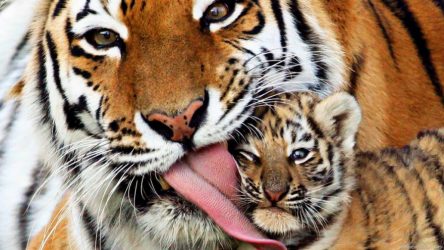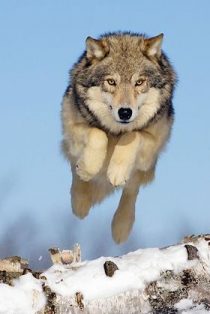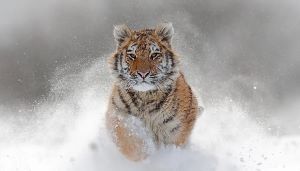Saving Siberian Tigers…
Amazing Gains in Saving Siberian Tigers! Russian Federation to Host the 70th meeting of a Critical Convention. The International Trade in Endangered Species of Wild Fauna and Flora.

SAVING SIBERIAN TIGERS: Russians Battling Trade of Endangered Species
NOTE: This Wildlife article is posted as “news without politics.” What matters to us long-range is saving our Endangered Animals. Every nation in this world has good-hearted men and women who struggle to save threatened species.
In a press release, the CITES Secretariat has announced that “an offer made by the Russian Federation to host the 70th meeting of the CITES Standing Committee in Sochi has been accepted.” CITES is “the Convention on International Trade in Endangered Species of Wild Fauna and Flora.”
Sochi is located on the Black Sea coast. It’s near the border between Georgia and Russia. The city offers modern transport and meeting facilities allowing it to host major international events.
Sochi hosted the exciting XXII Olympic Winter Games in 2014. It’s also one of the host cities of the 2018 FIFA World Cup. The northeastern part of the city belongs to the Caucasian Biosphere Reserve. Which is a UNESCO World Heritage Site. It’s one of the few places in Russia with a subtropical climate.
Partners in Protection
Mr Sergei Donskoi is Minister of Natural Resources and Environment of the Russian Federation. He said “The Russian Federation has been a Party to CITES for 25 years. We are convinced that the Convention has been a highly effective international mechanism to regulate trade in wildlife. And to coordinate the global efforts to counter illicit trafficking in CITES-listed species of animals and plants.”
CITES Secretary-General, John Scanlon added, “We are most grateful for the generous offer of the Russian Federation. They’ll host the 70th meeting of the CITES Standing Committee. Which is a reflection of its strong support for CITES. Critical decisions will be made at this meeting. These decisions address the regulation of legal and sustainable trade in CITES-listed species and measures to combat illegal wildlife trade.” [1]
Saving Siberian Tigers: The Illegal Trade
 “Russia has expressed an interest in using this opportunity to introduce the outcomes of its ‘Year of Specially Protected Areas.’
“Russia has expressed an interest in using this opportunity to introduce the outcomes of its ‘Year of Specially Protected Areas.’
And explain measures taken to develop the network of specially protected area and national programmes for protection of endangered species,” explained Mr Scanlon.
“These include bears (save our bears!), falcons, leopards, saiga antelopes, sturgeons, tigers and rare plant species.”
Russia’s dramatic efforts to save the beautiful but endangered Siberian Tiger stand out. The International Tiger Forum in St Petersburg sent a loud and clear message to criminals who prey upon tigers. “You will be hunted down and brought to justice!”
Siberian Tigers are also called Amur Tigers.
Almost every part of a tiger, including the majestic Siberian Tigers, has a value in the Black Market of illegal trade in wildlife.
Its skin, bones, whiskers, collar bones, feet, claws, teeth, penis and tail have all been used for a variety of purposes.
Illegal trade in tiger meat for human consumption appears to have increased in recent years. Trade in captured live tigers, although limited, also occurs. Primarily for private collections of exotic species. Or as a status symbol.
Saving Siberian Tigers: The Good News
Russia’s Far East is home to 95% of the global population of Siberian tigers. A recent census of Amur (Siberian) tigers inhabiting that country’s Far East showed that the big cats have increased in numbers. GRRRREAT NEWS!
The Russians use photo-traps, which are long distance cameras. These give amazing results, based on the fact that each individual tiger has a unique coat pattern. Just like a human’s fingerprints. Through long range photos, wildlife officers have been able to identify, catalogue and count the big cat populations.
Wildlife officers have also put transmitter collars on some cats. And dramatically rescued and released others.
This year’s CITES meeting in Sochi will help focus more world attention on the endangered species problem. It will show its successes — and reveal the work yet to be done.
And See: “What are Spirit Bears?” They’re Real! They’re the rarest bears on Earth! – Sacred White Bears & Native American Legends.
Did you like this Wildlife Post?
 IF SO, YOU MIGHT WANT TO READ WOLFBLOOD — MY MOST POPULAR ANIMAL STORY: “HAPPY ENDING!”
IF SO, YOU MIGHT WANT TO READ WOLFBLOOD — MY MOST POPULAR ANIMAL STORY: “HAPPY ENDING!”
“I JUST READ WOLFBLOOD AGAIN FOR GOOD MEASURE. ONE FOR ANY WOLF LOVER. ENJOYED IT BUT WISH IT WAS A FULL LENGTH NOVEL.” – Gina Chronowicz @ginachron
“GREAT SHORT STORY! DOES REMIND ME OF CALL OF THE WILD, WHITE FANG…” – Evelyn @evelyn_m_k
A heartfelt and thrilling tale in the Jack London Tradition of a lone Gray Wolf and it’s search for its place in the vast Northern forests. FREE TO READ ==> WOLFBLOOD: A Wild Wolf, A Half-Wild Husky & A Wily Old Trapper
[1] CITES means the “Convention on International Trade in Endangered Species of Wild Fauna and Flora.” It has 183 members. They are 182 countries plus the European Union. CITES remains one of the world’s most powerful tools for wildlife conservation. Mostly through the regulation of trade. Thousands of species are internationally traded. And used by people in their daily lives for food, health care, housing, tourist souvenirs, cosmetics or fashion.
Their permit system seeks to ensure that international trade in listed species is sustainable, legal and traceable.
CITES was signed in Washington D.C. on 3 March 1973. And entered into force on 1 July 1975. Learn more about CITES by visiting www.cites.org
SAVING SIBERIAN TIGERS: Russians Battling Trade of Endangered Species.
Posted March 8, 2018.
“From The Edge of Extinction, the Beautiful Big Cats of Siberia are Making a Comeback!

SOURCE: CITES, PR Newswire & Civilized Bears.
TAGS: Amur tigers, Caucasian Biosphere Reserve, CITES and conservation program. Endangered Species, International Trade in Endangered Species. News without politics, Save Siberian Tigers, Sergei Donskoi, Siberian tigers, wildlife.












